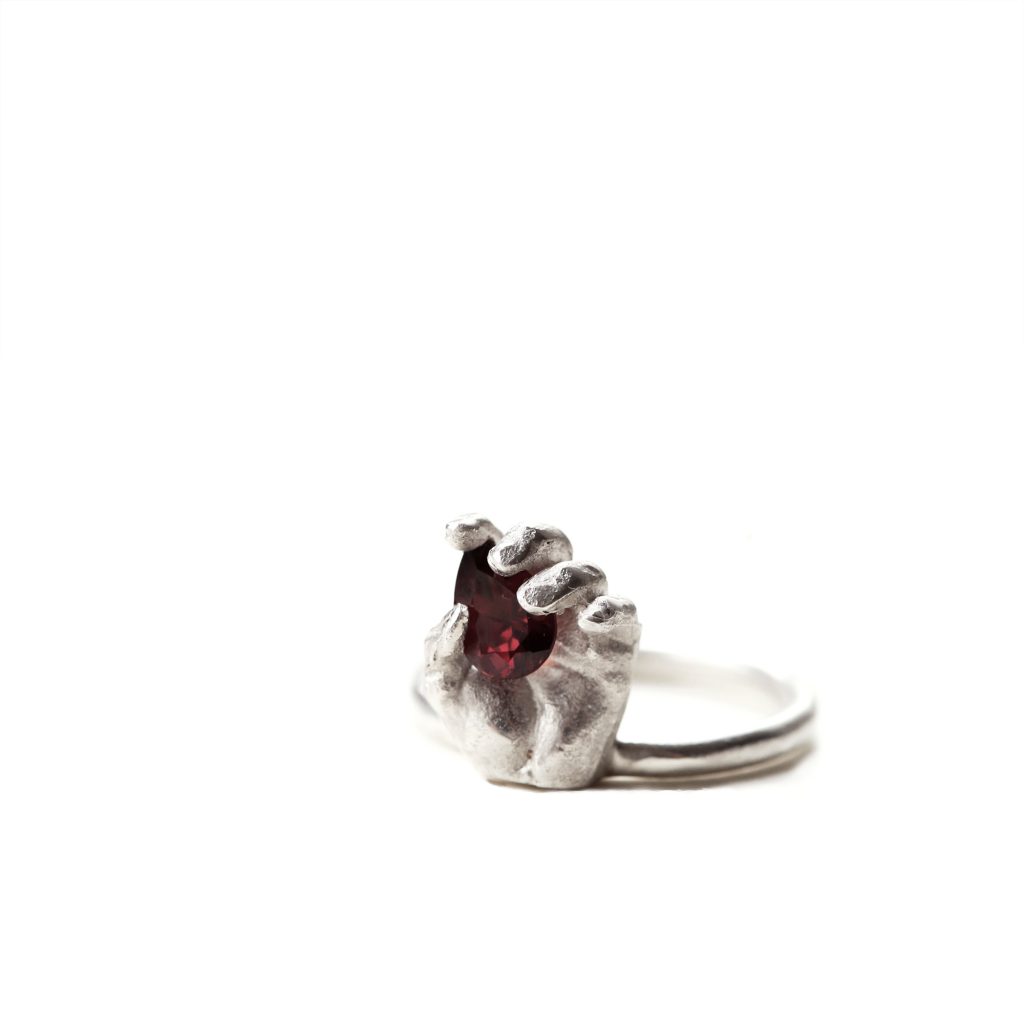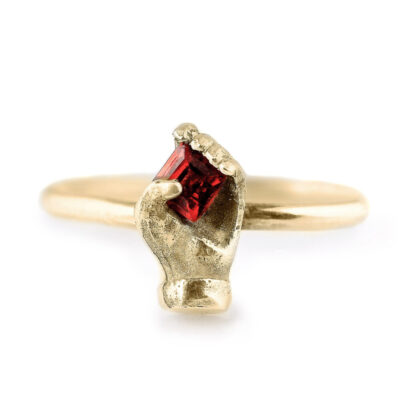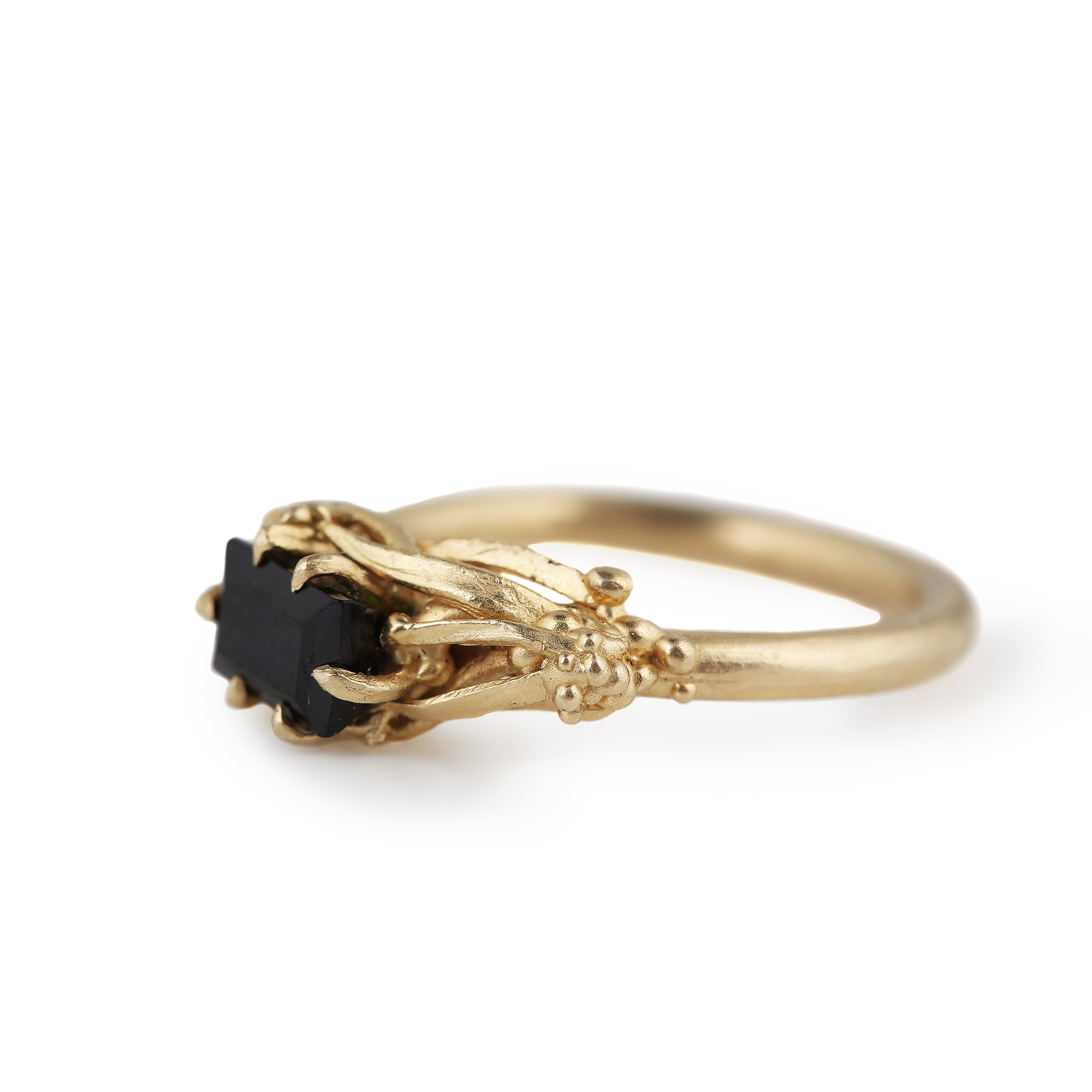Through out my work I use a lot of beautiful red garnets few gemstones capture the essence of both fire and elegance like the red garnet. Its deep, wine-coloured glow has mesmerised humanity for centuries — a symbol of love, courage, and the life force itself. Beyond its beauty, the garnet carries a profound history, one that threads through ancient civilisations, royal courts, and the romanticism of the Victorian era. Wearing a red garnet isn’t just about colour—it’s wearing a symbol of life’s flame, protection in travel and trials, and the connection of heart to soul.

A Stone as Old as the Earth
The name garnet comes from the Latin granatus, meaning “seed-like,” a nod to the gem’s resemblance to the vibrant seeds of a pomegranate. Traces of garnet adornments date back over 5,000 years — found in the jewellery of ancient Egypt, Rome, and Persia. Warriors once carried garnets into battle, believing the stone would shield them from harm, while travellers used it as a talisman for protection on long journeys.
The Symbolism: Fire, Love, and Life Force
At its heart, the red garnet is a symbol of passion, devotion, and vitality. Its crimson hue has long been associated with the heart — both as the seat of love and the source of life itself.
It is said to rekindle energy, restore emotional balance, and ignite courage in those who wear it. In ancient lore, the garnet was thought to illuminate the night and protect against melancholy — a beacon of inner fire when all else faded.
Where the Earth Gives Up Its Flame
Garnets are found across the globe — from India, Sri Lanka, and Madagascar to Russia, the United States, and Mozambique. Each region yields slightly different hues and varieties, from the classic deep red almandine to the fiery orange-red pyrope.
Despite their wide distribution, the allure of garnets remains universal — they are stones of the earth’s hidden energy, crystallised under immense pressure, embodying the raw and eternal strength of nature.
Victorian Elegance and Sentiment
During the Victorian era, garnets experienced a grand revival. Queen Victoria herself adored these crimson jewels, and they became a symbol of deep affection and fidelity. Garnets were often set in intricate gold settings, sometimes forming clusters that mirrored a pomegranate’s seeds — a quiet tribute to abundance and enduring love.
In this period, jewellery was more than adornment; it was language. A garnet brooch or pendant was not just decoration — it was a whisper of devotion, a secret emblem of the heart’s promise. To gift a garnet was to say, “My love burns eternal.”
A Modern Emblem of Timeless Passion
Today, red garnets remain a favourite among those who seek jewellery with soul. Whether set in contemporary minimalism or heirloom-inspired designs, the garnet bridges the past and the present — a gemstone that continues to embody passion, strength, and everlasting connection.
To wear a garnet is to carry a fragment of the earth’s fire close to your heart — a reminder that love, like flame, is both fierce and eternal.
Few gemstones carry as much layered meaning as the red garnet. With its rich wine-red glow, it speaks of passion, protection, and enduring love. Below, we explore its symbolism, proud history, mining provenance, and its full flourish during the Victorian era.
Symbolism & Meaning
The red garnet has long been associated with the heart, blood and life-force. Because of its vivid crimson tones, it was regarded as a symbol of vitality and protection. For example:
- According to the International Gem Society (IGS), the red colour was “associated with the heart and blood” and thus believed to offer protection and to stir the heart to great deeds. International Gem Society
- Another source notes that “based on the garnet’s deep red colour, people in ancient times believed the stone was associated with blood and the heart.” With Clarity
- In Christian tradition, the red garnet (or carbuncle) was considered a symbol of Christ’s sacrifice. jewelsforme.com+1
In more modern interpretations, the stone is said to embody courage, passion, and creative spark. HAWKHOUSE

A Brief History
The story of red garnet spans millennia.
- The Egyptians used garnet beads and amulets as early as 3000 BC, viewing them as emblems of life. American Gem Society+1
- In ancient Rome, garnets were used for intaglio seals and rings, marking them as valued by elites. GIA
- During the Middle Ages, garnets were popular with clergy and nobility and woven into religious meanings of sacrifice and protection. International Gem Society+1
Thus, the red garnet has been treasured not only for its beauty but for the belief that it carries deep symbolic power and social status.
Where They Are Mined
Geographically, garnets (including the red varieties) are found worldwide—and their origin influences their hue and value. Some key mining locales:
- According to the Geoscience Australia, Australia produces almost half the world’s garnet output, with significant production also in India, USA and China. Geoscience Australia
- Gem-quality red garnets have traditionally been mined in the Bohemian Hills (in what is now the Czech Republic). For example, pyrope garnets from Bohemia were mined commercially from the 16th century. GIA
- Other noted sources worldwide include India, Kenya, Tanzania and the United States. Knox Jewelers+1
Mining methods vary: from alluvial sand/river gravels to hard-rock deposits, depending on the region and geology. Minerals Education Coalition
Victorian Era Meaning & Popularity
The red garnet experienced a particularly strong revival in the late 19th century during the Queen Victoria era, when jewellery was deeply symbolic.
- According to a dedicated piece on Victorian jewellery, garnets with rich red colour were “associated with love, passion, and heart’s desire, making them popular in engagement rings and love-tokens.” Mayveda Jewelry
- In the same era, the Bohemian garnet industry flourished, producing clusters of small red stones set close together (often likened to pomegranate seeds) in silver or gold mounts. gemstone.org+1
- Jewellery during the Victorian period (1837-1901) was characterised by symbolism, with motifs such as hearts, hands, and other sentimental emblems. International Gem Society
From ancient Egypt to the glittering salons of Victorian Europe, the red garnet has worn many roles: protector, lover’s token, symbol of the heart’s fire. Its deep crimson hue reminds us of love, courage and enduring strength. When mined, cut and set with thought, a red garnet piece becomes more than jewellery—it becomes story, meaning, legacy.




 No products in the cart.
No products in the cart. 